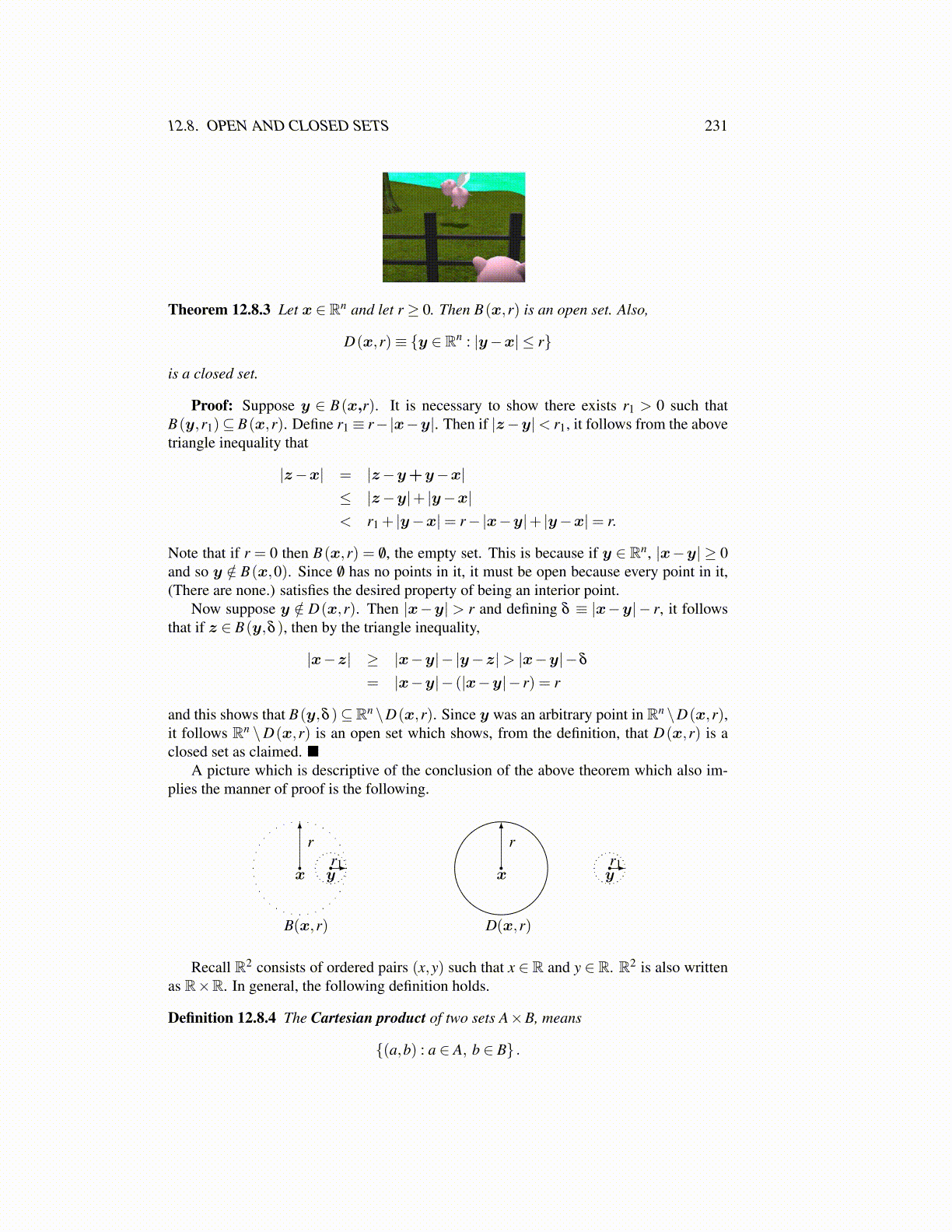
12.8. OPEN AND CLOSED SETS 231
Theorem 12.8.3 Let x ∈ Rn and let r ≥ 0. Then B(x,r) is an open set. Also,
D(x,r)≡ {y ∈ Rn : |y−x| ≤ r}
is a closed set.
Proof: Suppose y ∈ B(x,r). It is necessary to show there exists r1 > 0 such thatB(y,r1)⊆ B(x,r). Define r1 ≡ r−|x−y|. Then if |z−y|< r1, it follows from the abovetriangle inequality that
|z−x| = |z−y+y−x|≤ |z−y|+ |y−x|< r1 + |y−x|= r−|x−y|+ |y−x|= r.
Note that if r = 0 then B(x,r) = /0, the empty set. This is because if y ∈ Rn, |x−y| ≥ 0and so y /∈ B(x,0). Since /0 has no points in it, it must be open because every point in it,(There are none.) satisfies the desired property of being an interior point.
Now suppose y /∈ D(x,r). Then |x−y| > r and defining δ ≡ |x−y| − r, it followsthat if z ∈ B(y,δ ), then by the triangle inequality,
|x−z| ≥ |x−y|− |y−z|> |x−y|−δ
= |x−y|− (|x−y|− r) = r
and this shows that B(y,δ )⊆Rn \D(x,r). Since y was an arbitrary point in Rn \D(x,r),it follows Rn \D(x,r) is an open set which shows, from the definition, that D(x,r) is aclosed set as claimed. ■
A picture which is descriptive of the conclusion of the above theorem which also im-plies the manner of proof is the following.
yx
rr1
B(x,r)
yx
rr1
D(x,r)
Recall R2 consists of ordered pairs (x,y) such that x ∈ R and y ∈ R. R2 is also writtenas R×R. In general, the following definition holds.
Definition 12.8.4 The Cartesian product of two sets A×B, means
{(a,b) : a ∈ A, b ∈ B} .